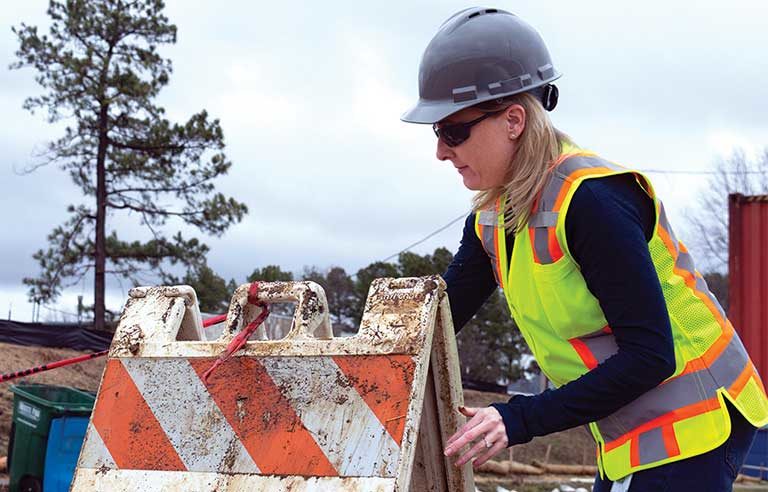Proper PPE for female workers in construction
How can women’s hi-vis personal protective equipment be used to attract and retain female construction workers?

Responding is Nicole Novick, product manager, Radians, Memphis, TN.
Recently, I had the privilege of attending a meeting dedicated to women in construction. As the meeting progressed, it became very evident that two of the major challenges facing industry today are employee attraction and employee retention.
Even though women make up about half of the overall U.S. workforce, the construction workforce can claim only 10% of female employees. This means women are still an untapped employee market, especially in construction and the trades. Ideas on how to attract women to these areas were discussed during the meeting before someone asked, “Hey, once we get them, how do we keep them?”
The response that rose to the top of the list was “inclusivity.” Women need to feel like they’re part of the team. They’re strong team members, willing to learn and bringing a diverse set of skills. Their development and inclusion as team members and professionals is key to retention.
Part of being inclusive is to provide female workers with proper-fitting PPE, including high-visibility clothing. For years, women in the trades haven’t had many choices in their workwear. They often wore the same apparel that their male counterparts were wearing. In some instances, this worked. But, overall, these oversized protective garments didn’t fit properly. Baggy apparel can lead to catch hazards on construction equipment, which often results in trips and falls – a leading cause of injuries at jobsites. Tight-fitting apparel leads to discomfort and improper wear, such as wearing garments open, tucked or not at all.
Other times, women wore completely different garments from men, which made women stand out from their male peers. This often left women feeling ostracized from the team.
In the past few years, garments tailored for women have become more common. These garments look similar to men’s apparel but are designed with specific details that consider the female form and shape. Some of the design details include:
- Narrower at the shoulders
- Somewhat tapered at the waist
- Wider sweep (hips) or side slits
- Higher zippers/closures for more coverage and security
These better-fitting garments boost compliance and help reduce trips and falls from catch hazards. Female construction workers are already required to navigate myriad risks at work because of the nature of their work, so why add ill-fitting apparel to the mix?
Hi-vis vests, T-shirts, winter jackets and rain jackets designed specifically for women are now available to help outfit female workers in a variety of applications and seasons. ANSI/ISEA 107 Type O Class 1, Type R Class 2 and Type R Class 3 garments are also offered, covering various compliance and application needs.
Plus, if your construction site needs a specialized or custom garment for women or men, many top-tier PPE manufacturers are now more equipped to create “Made in the USA” custom apparel according to your specific jobsite needs.
The variety of hi-vis apparel available today allows women in construction and the trades to fit in with their male peers. Team inclusivity along with properly fitting apparel and PPE will make women feel more comfortable and secure at work. Feeling safe, secure and comfortable on the job not only will help attract female workers but will help retain them too.
Editor's note: This article represents the independent views of the author and should not be construed as a National Safety Council endorsement.
Post a comment to this article
Safety+Health welcomes comments that promote respectful dialogue. Please stay on topic. Comments that contain personal attacks, profanity or abusive language – or those aggressively promoting products or services – will be removed. We reserve the right to determine which comments violate our comment policy. (Anonymous comments are welcome; merely skip the “name” field in the comment box. An email address is required but will not be included with your comment.)

